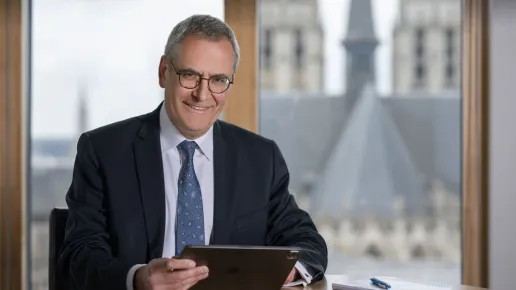The Treaty of Rome, signed in 1957, established the single market and outlined a roadmap towards full freedom of movement of capital. Since then, the completion of this roadmap has been a multigenerational effort that continues to this day.
After almost seventy years, with, among others, the introduction of a single rulebook and the Banking Union, we have achieved an integrated framework. In fact, banks can operate throughout the EU and the Single Supervisory and Resolution Mechanisms provide for crisis management and prevention regardless of Member States’ borders.
Freedom of establishment in Europe has come a long way. One practical example of this progress is the success of digital banks in the Banking Union. Some of these digital banks have grown in a few years to serve millions of clients within the European Union through their branches. This would not have been possible without the reforms listed above. However, these digital banks, also offer food for thought as to what reforms are still outstanding. Their clients may depend for deposit insurance on a DGS, possibly small, located in one single Member State. Clearly, this is neither a sufficiently Europe-wide nor a clear-cut solution. European authorities should deal with European banks, and European clients should expect European oversight.
Regulatory fragmentation creates the wrong incentives and undermines trust. In addition, fragmentation has a clear impact on banks’ incentives to integrate. One of the issues that pan-European banks could face is ringfencing of capital, loss absorption and liquidity requirements on subsidiaries. Ringfencing is a circular problem as it inconsistent with a complete Banking Union but it is also a reaction to an incomplete Banking Union. Trust is what can break this vicious circle.
To build this trust, the Banking Union must be complete. Unfortunately, though, the Banking Union’s third pillar - a European deposit insurance system – is missing and remains out of reach for the time being.
Nevertheless, to further increase the credibility of the Single Resolution Mechanism (SRM), the Single Resolution Board (SRB) has been intensively working on developing its capabilities and policies to deal with cross-border bank crises. Our ultimate goal is to foster trust in the Banking Union, in general, and the SRM in particular.
As an example, the SRB has worked on the operationalization of the Single Point of Entry (SPE) strategy. In particular, since 2022, the SRB has been focusing on rooting out obstacles to the implementation of cross-border bail-in whilst working on the resolution powers in the execution of SPE strategies. In addition, our experts are studying the use of arrangements, including contractual, safeguarding the availability of sufficient resources to support subsidiaries. We believe that this workstream will be critical to ensure that banks (and resolution authorities) are able to execute cross border bail-ins with minimum friction.
Currently, certain safeguards are in place, such as a clearly prepositioned internal MREL. BRRD2 sets a requirement for the level of prepositioned internal MREL counterbalanced by the possibility to grant waivers. We have not hesitated to grant waivers when the conditions were met.
Devising and implementing policies have been at the core of our business since our inception in 2015. In fact, in the last eight years, we have been focusing on requesting the banks to develop their resolution planning and execution capabilities, on preparing the resolution plans and on designing resolution policies. In a word, we have been busy with capacity building.
Since this year, the SRB is entering in a new phase. Now the time has come to operationalize our plans and policies and check the bank’s capabilities. We test, regularly, that banks have been correctly implementing our policies and that the SRB (and the SRM at large) have indeed “what it takes” to resolve any kind of bank under our remit, including pan-European institutions. The SRB has already organized resolution weekend simulations (dry runs). Dry runs are thematic. As the last example: how to operationalize a cross-border bail-in. These dry runs will become more frequent over time. In addition, we are also asking the banks to execute dry runs themselves in order to test their ability to undergo a bail-in.
Our work, as the one described above, is critical to ensure trust in the SRM but we can only operate with the tools at our disposal. In order to have a true single market for financial services, legislators need to step in and complete the Banking Union. The Crisis Management and Deposit Insurance (CMDI) proposal recently published by the European Commission is a step in the right direction but the third pillar of the Banking Union remains a necessary condition for a complete single market.
SRB’s work is critical to ensure trust in the SRM but legislators should not renounce a complete BU.
SRB Chair Dominique Laboureix
Contact our communications team
Recent news

The SRB recently published two important documents clarifying its expectations of banks regarding operational resolvability: the Operational guidance...

The body responsible for managing banks in crisis in Europe is celebrating its 10th anniversary and claims that Popular's 2017 resolution has been...

In last June, Parliament and Council have clinched a political deal that is applicable to all the EU member states, and which can be seen as a step...
Related news and press releases

The SRB recently published two important documents clarifying its expectations of banks regarding operational resolvability: the Operational guidance...





